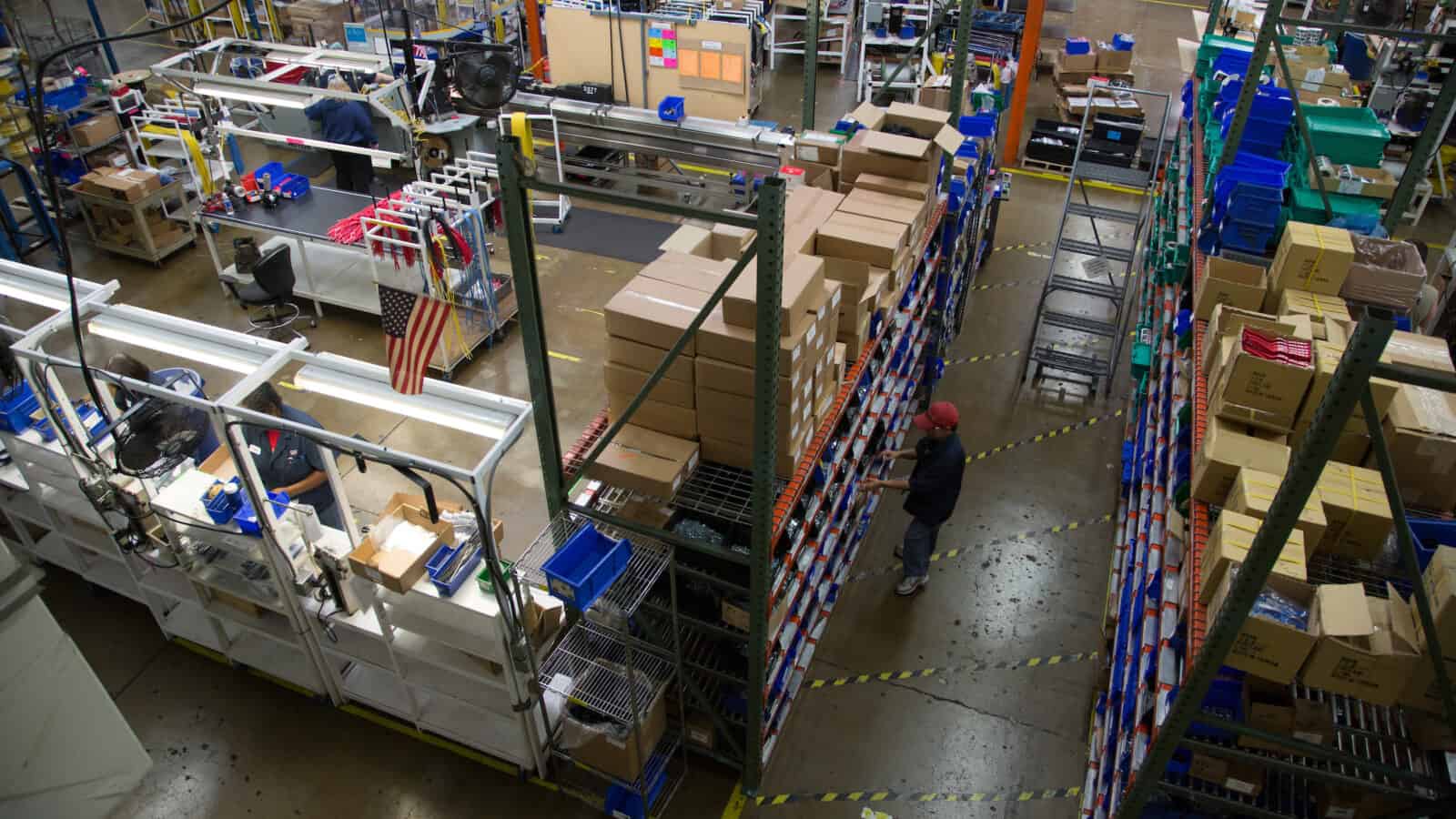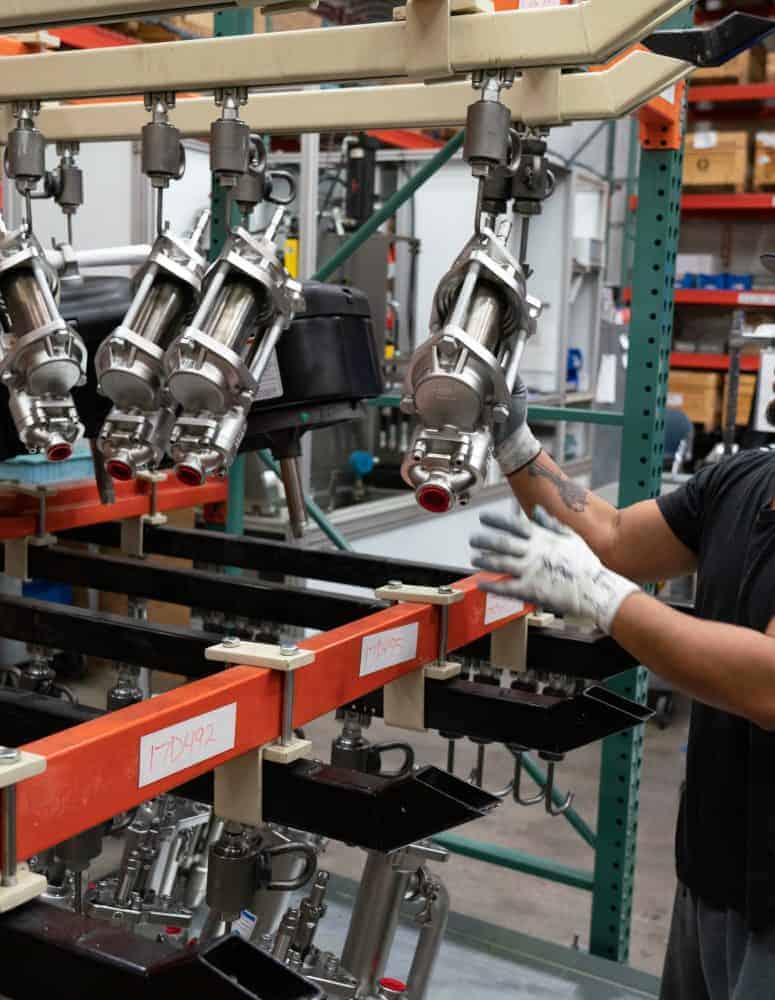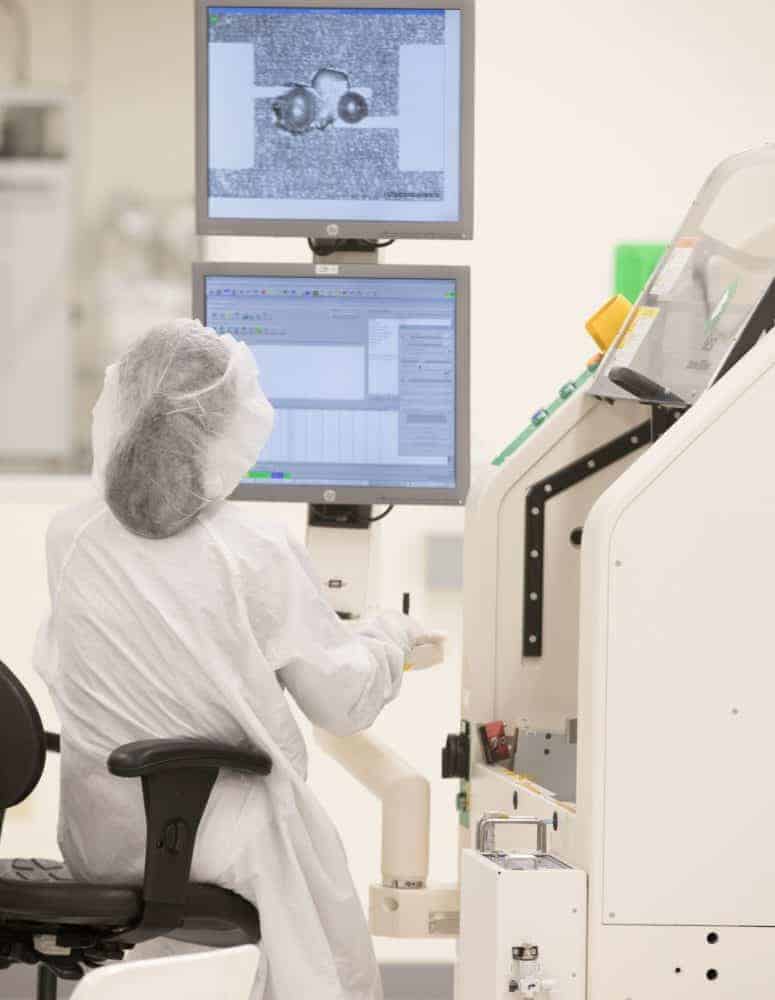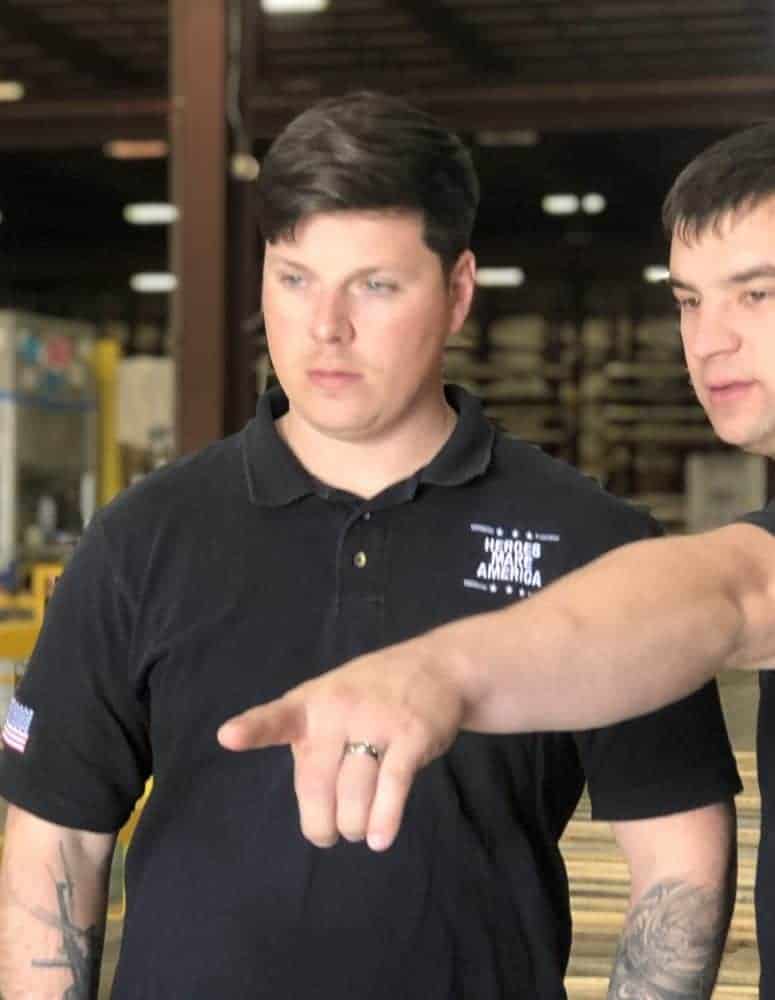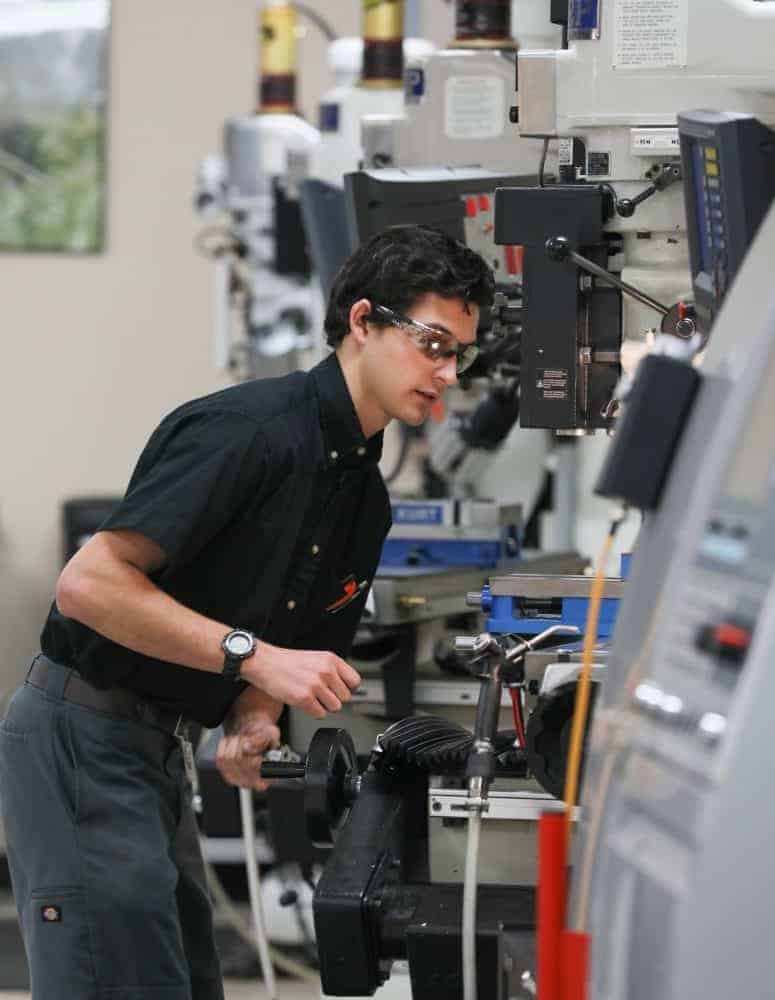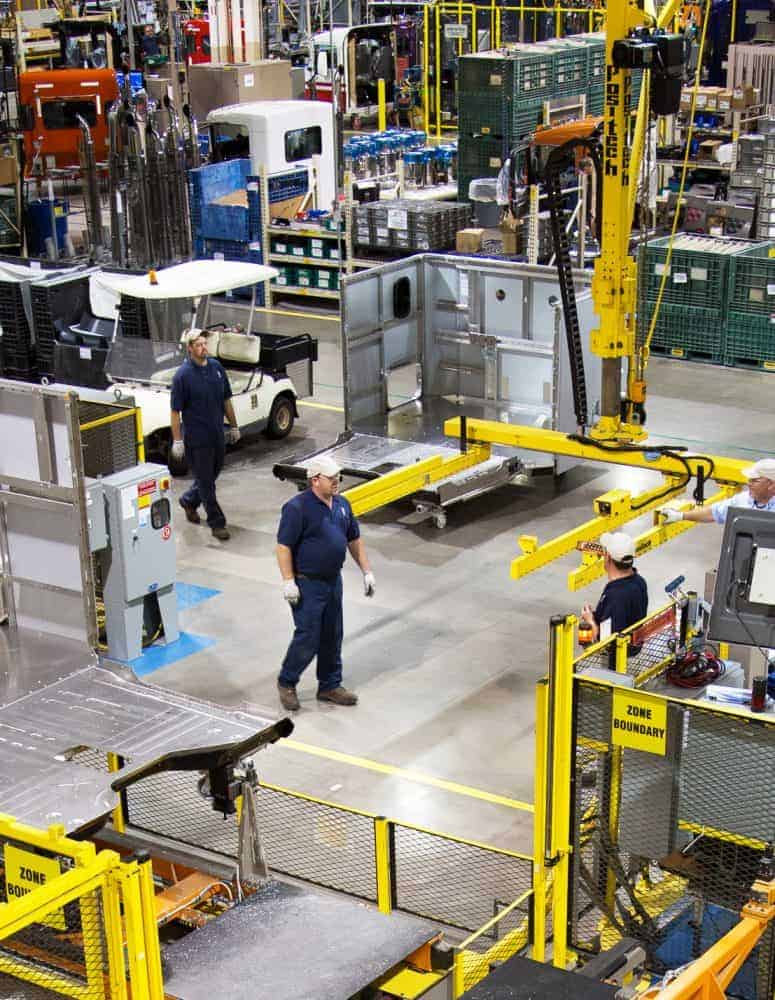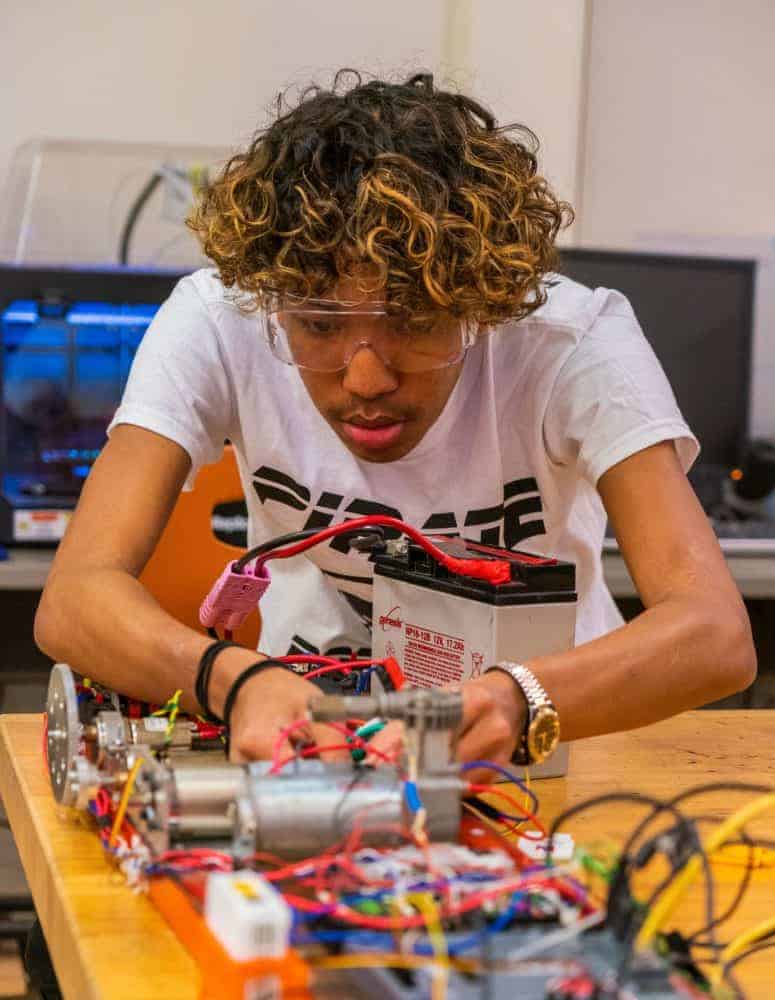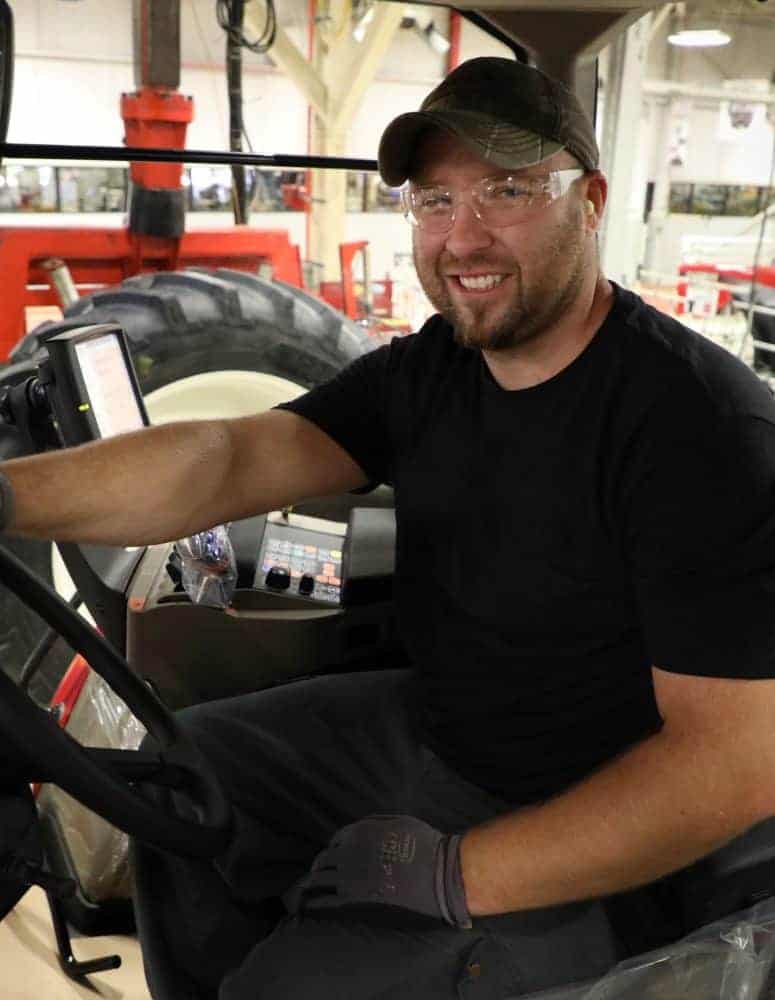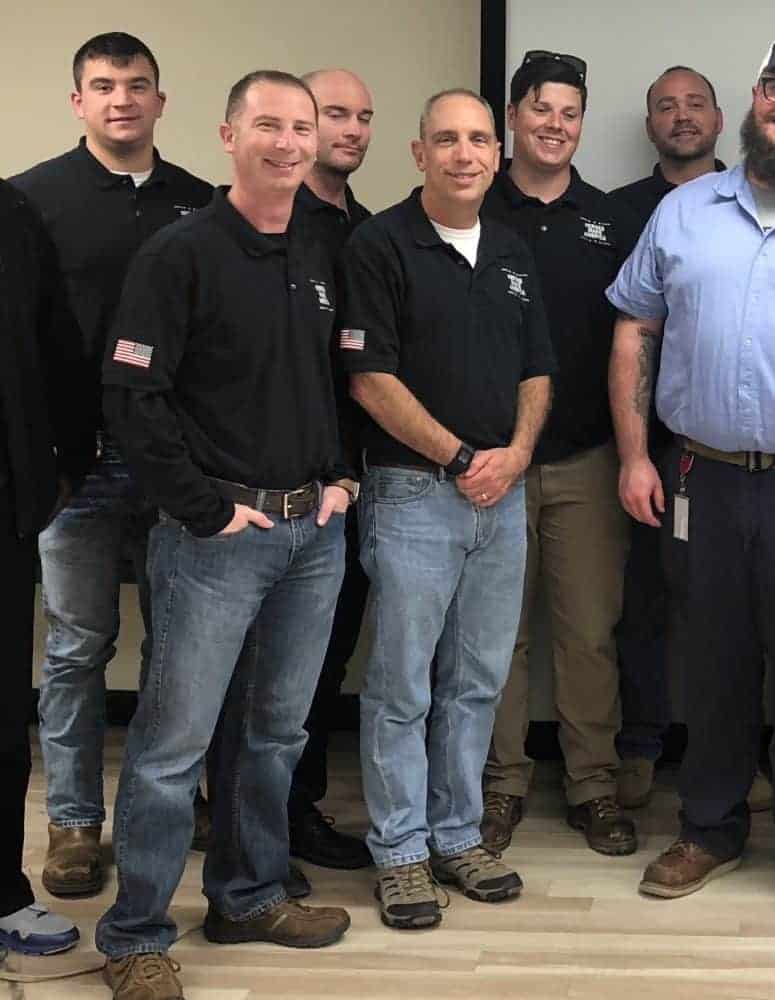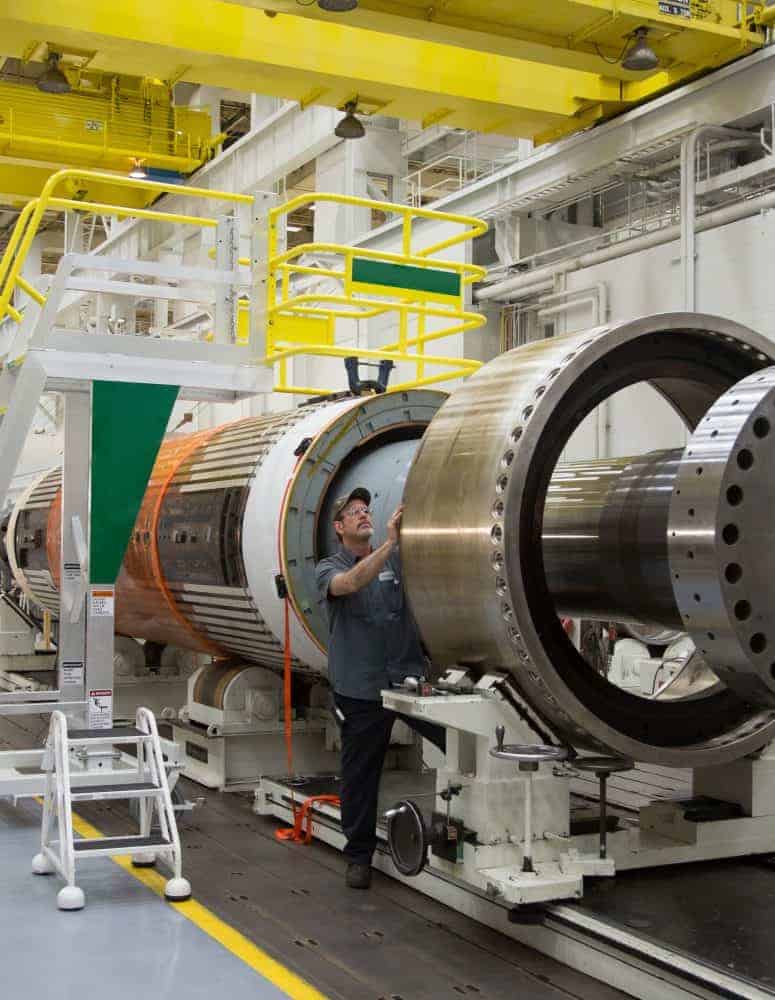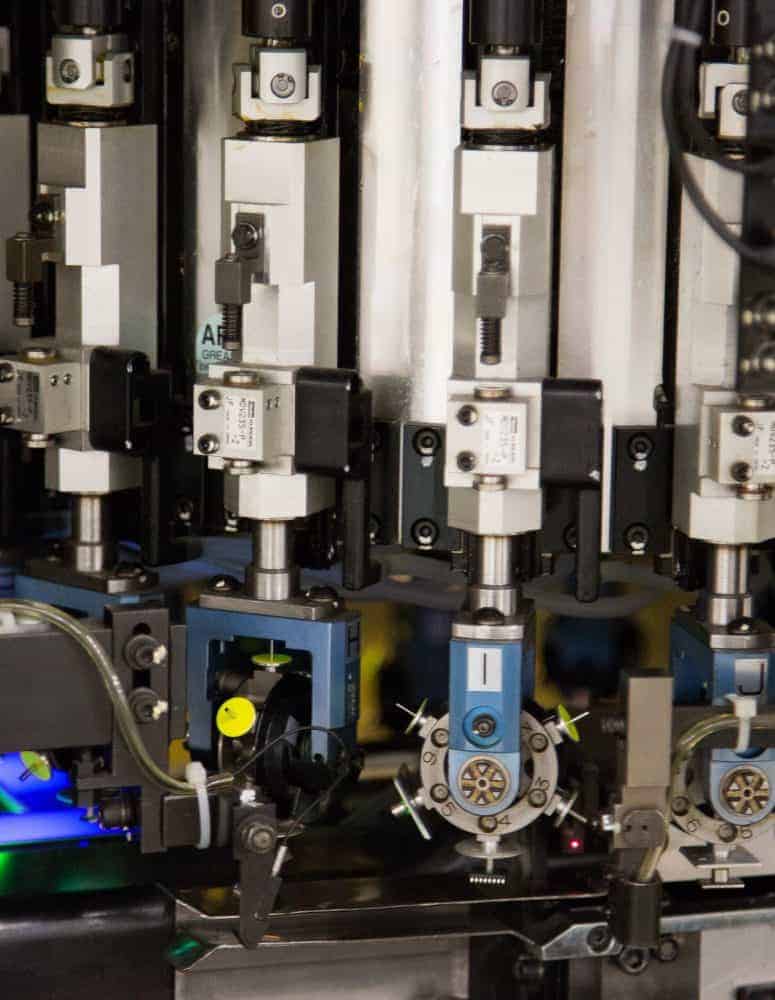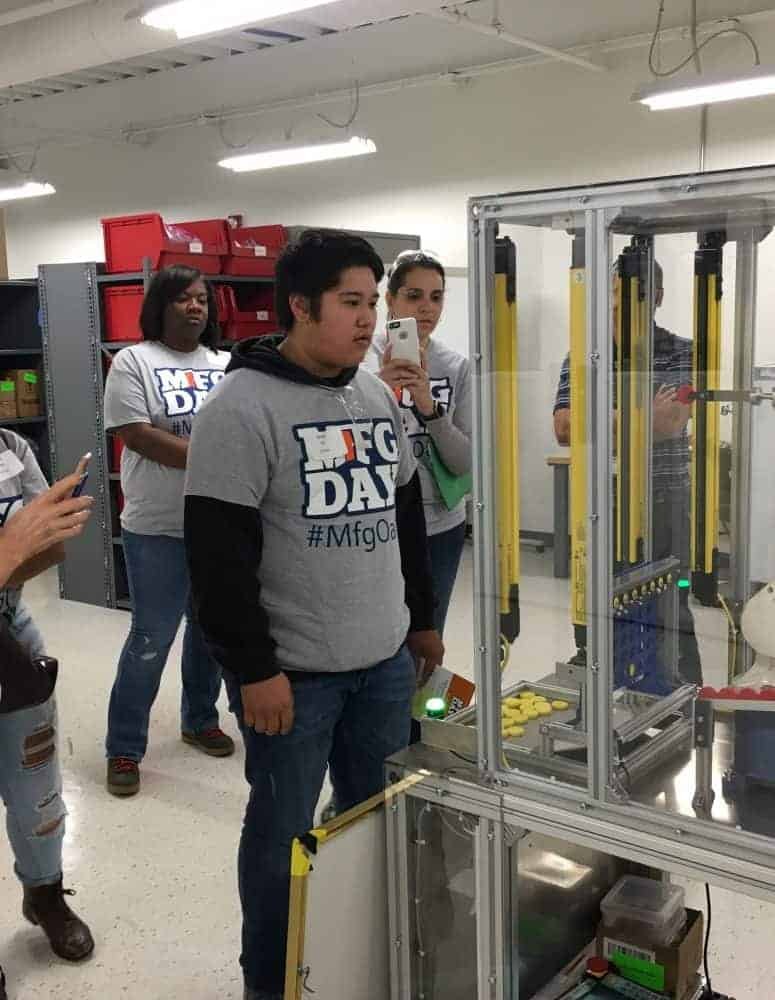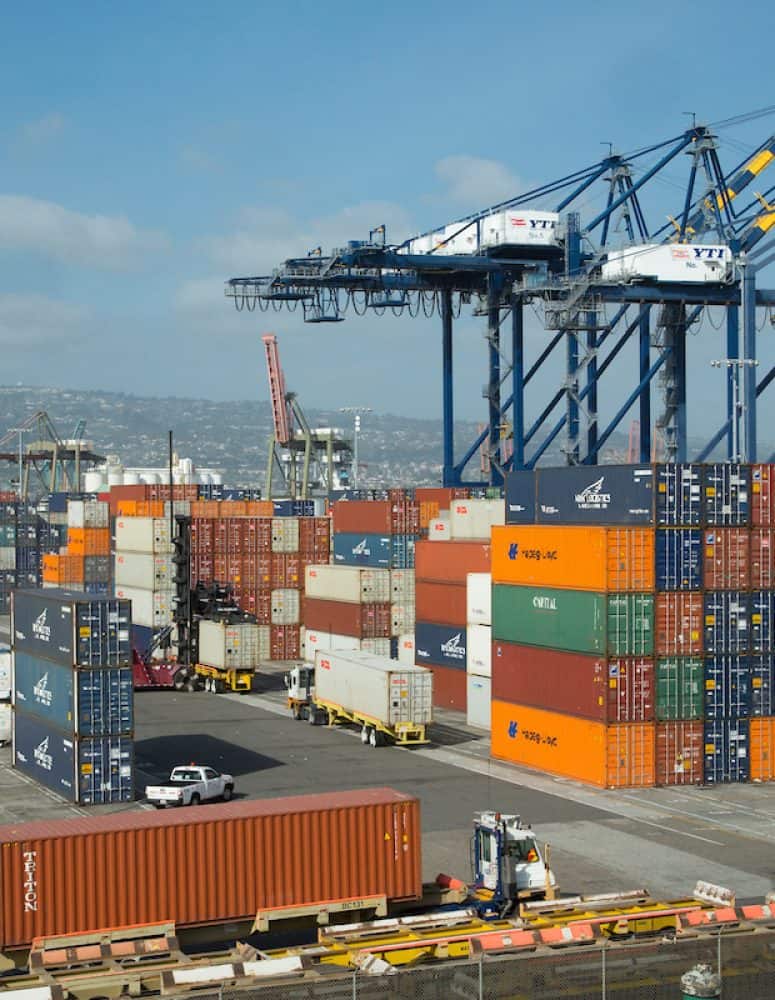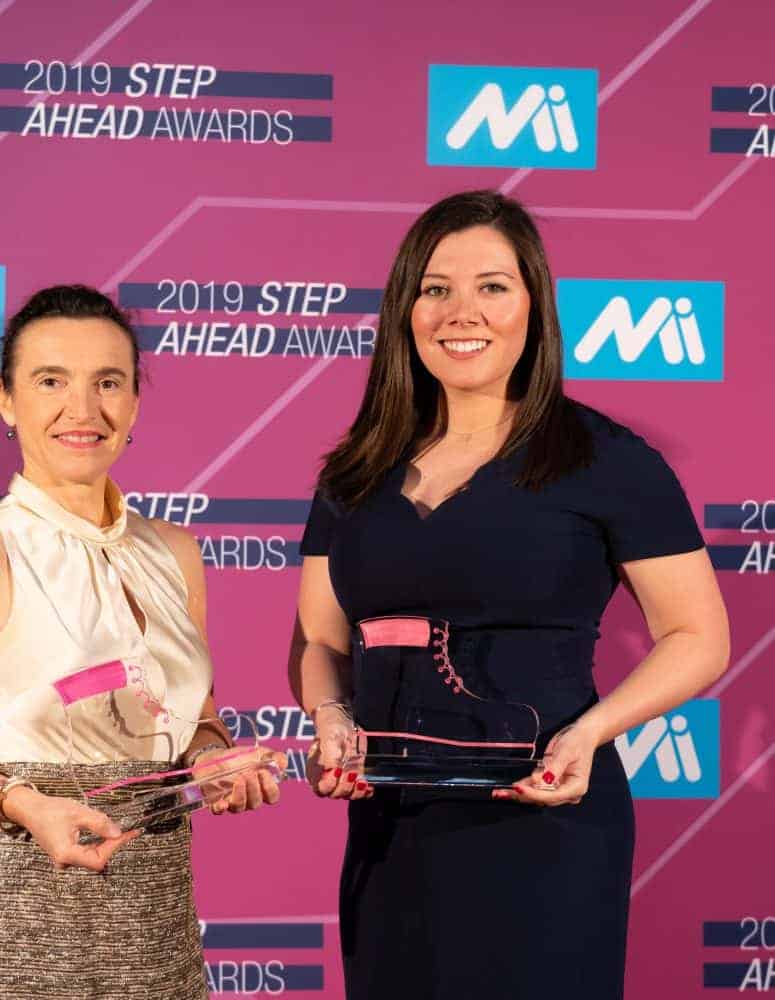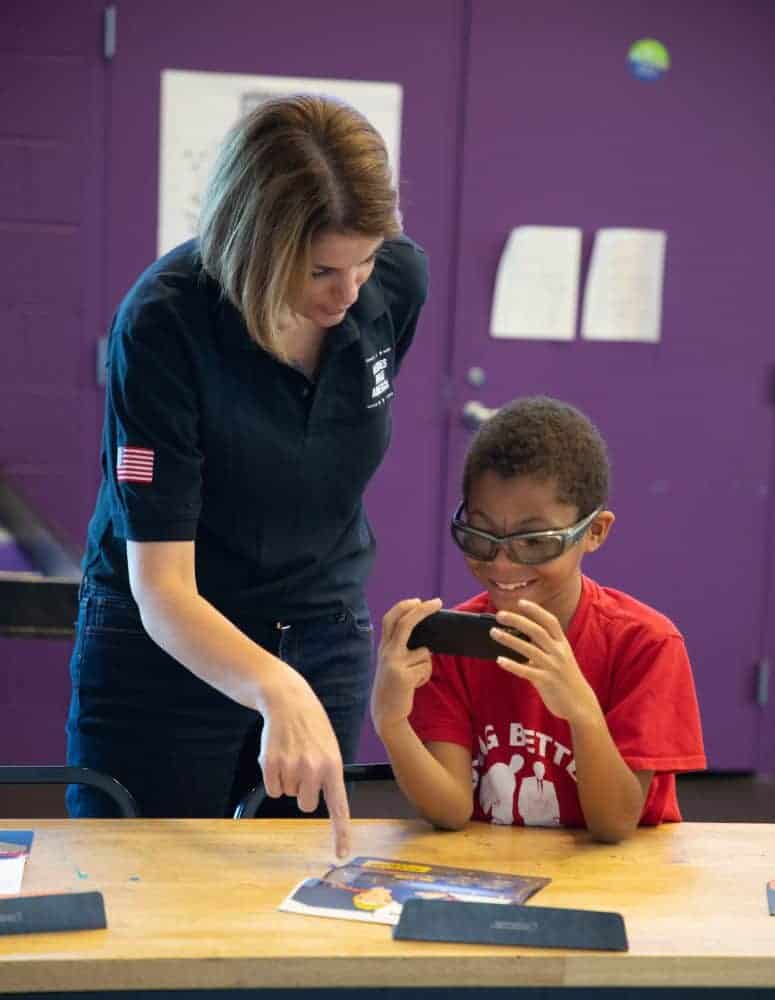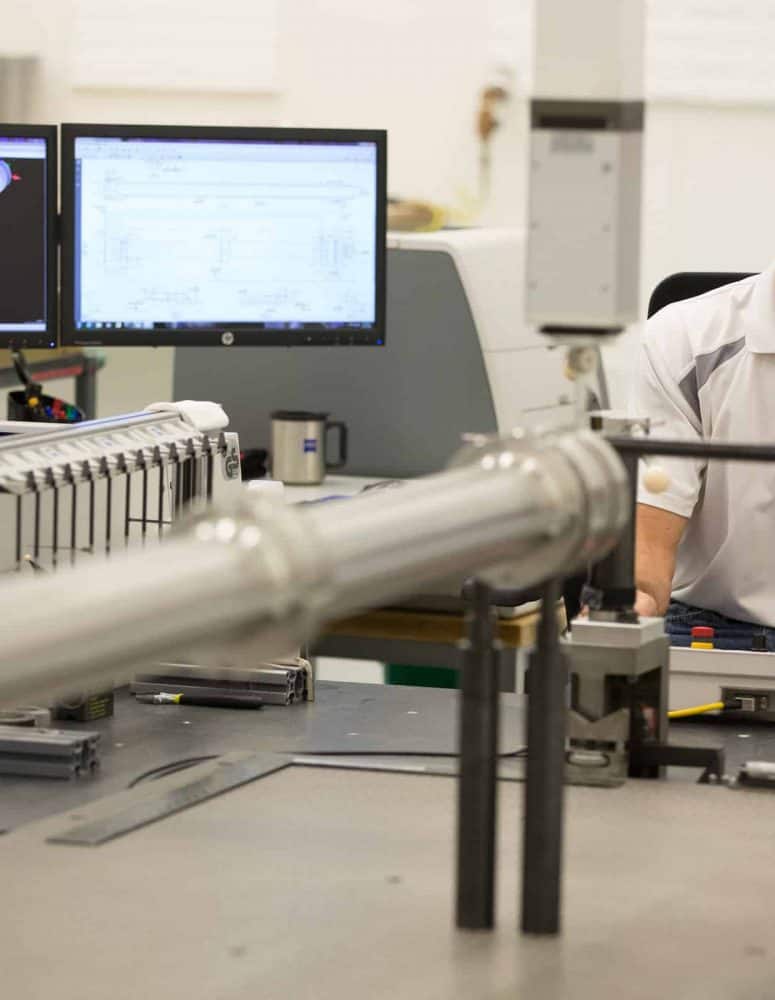Attract the Next Generation by Getting Involved in Manufacturing Day
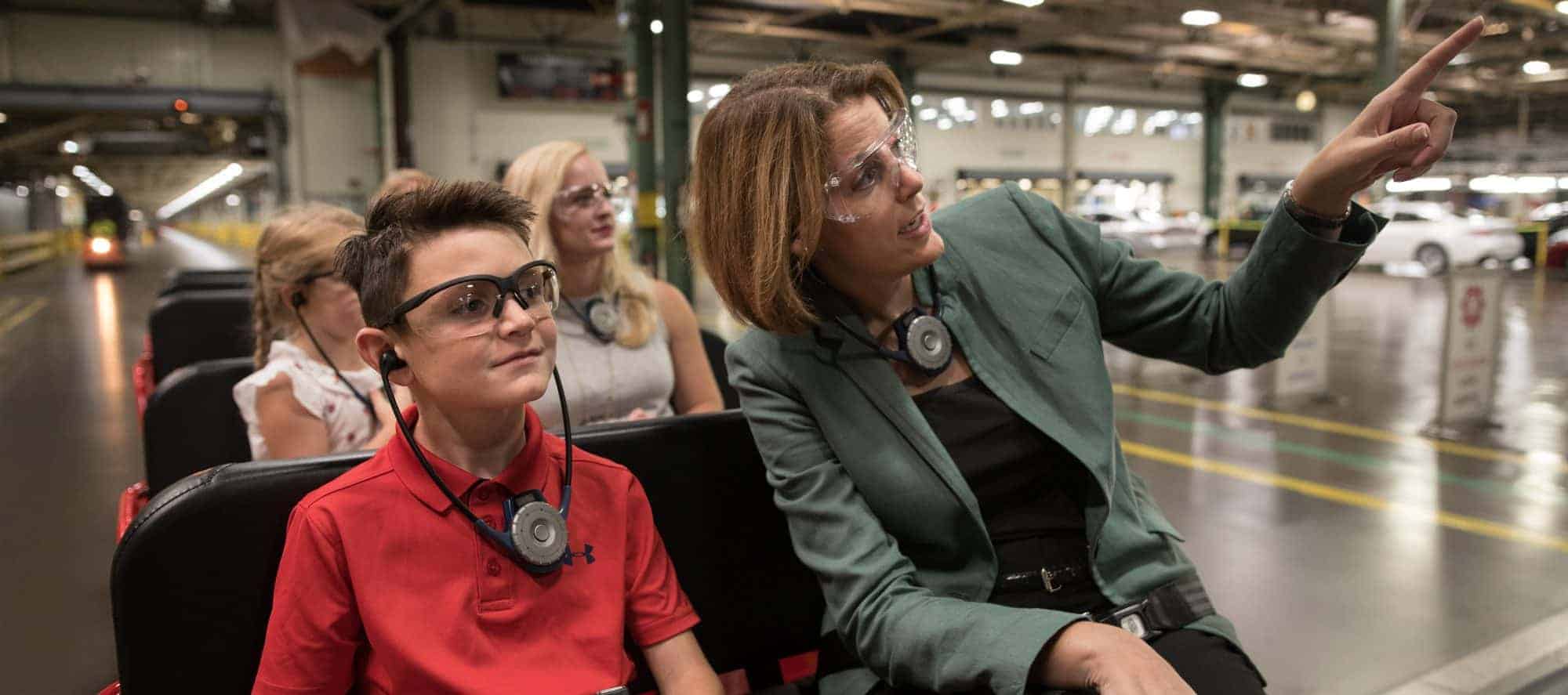
Manufacturing Day, led by the Manufacturing Institute and the National Association of Manufacturers, is kicking off on Oct. 4.
Carolyn Lee, the Manufacturing Institute’s executive director, explains what makes this event unique, why it’s personally important to her and how you can get involved.
What is Manufacturing Day?
Manufacturing Day shows off what modern manufacturing looks like. Kicking off on the first Friday in October—and continuing throughout the month—this annual event helps manufacturing companies and educational institutions open their doors to students, parents, teachers, community leaders and more. Manufacturing Day shows students why they should consider a career in manufacturing and what skills manufacturing companies are looking for in job candidates.
How does Manufacturing Day make a difference for students?
On Manufacturing Day last year, hard material manufacturer CERATIZIT hosted an event in Michigan. At the beginning of the day, they asked the group who was interested in a career in manufacturing. Only three or four students raised their hands. The students then spent the day taking the tour of the facility, trying out CERATIZIT’s products and using CAD software to make their own keychains. At the end of the day, they were asked the same question about who would be interested in a career in manufacturing. This time, there were only three or four students who didn’t raise their hands!
You might think you know what manufacturing looks like today, but seeing is believing — and seeing modern manufacturing firsthand can be life-changing for students. I hope that Manufacturing Day makes a difference in the lives of the students who attend, getting them to seriously consider a career in manufacturing.
Why is Manufacturing Day important to you?
I grew up in a manufacturing family. My dad, grandfather and even my grandmother for a short time worked in manufacturing. When I was a kid, manufacturing was a lot different than it is today — and I still thought it was cool! Now, it’s even more amazing. Manufacturing careers are increasingly high-tech, and technology is increasingly an integral part of the industry. Manufacturing employees are excited about technology, and they’re excited to learn and grow in their careers.
It’s always amazing to see what the manufacturing workforce makes and what goes into making the things that improve our lives every day and how they do it. Manufacturing Day is the way for everyone to see it for themselves.
How can I get involved in Manufacturing Day?
If you’re a manufacturer, plan an event for your community on Oct. 4 (or another day in October), and make sure to register it on Manufacturing Day’s website. If you’re a student, parent or teacher, find events being held in your area using the map on our website.
Heroes MAKE America Fuels Veteran’s Oil and Gas Career

As a child, Josh Matherne dreamed of joining the military. He realized that dream as a team supervisor in the U.S. Army infantry at Fort Hood, where he mentored younger soldiers and helped ensure that they were doing their jobs safely and successfully.
“My grandfather was in the Marines, and he really pointed me in the right direction,” said Matherne. “I always thought it was the right thing to do. As soon as I could serve, I wanted to serve.”
All the while, Matherne was interested in the oil and gas manufacturing industry. When he began to think about a civilian career, the Heroes MAKE America program was a natural fit. The program aims to build a mutually beneficial pipeline between the military and manufacturing, offering transitioning service members in-demand manufacturing skills and training, and educating manufacturers on how to recruit and retain members of the military and their families. As a student in the Heroes program, Matherne expanded his knowledge in manufacturing and tailored his resume to reflect his work ethic, determination and passion for the industry. Through the program’s regular networking opportunities, company tours and training support, the initiative helped him launch his new career.
“The Heroes program gave me an idea of what I was getting myself into,” said Matherne. “It eased my transition by getting me into the civilian mindset and taught me how to interact with civilian workers.”
Like many Heroes MAKE America participants, Matherne initially wondered if his skills would transfer into his field of interest. But shortly after he began his current role as a chemical operator at Occidental Chemical in La Porte, Texas, he found that his military training made him ideal for a position that required discipline and attention to detail. He has already been fast-tracked toward a promotion, and he has found a familiar rhythm that reminds him of his experience as an infantry team leader.
“It’s kind of like the military,” said Matherne. “The family-style team; being a part of something worth being a part of.”
Matherne continues to share open job opportunities within his company and other oil and gas companies in order to help other veterans like him find their next career in a well-paying, growing sector. He’s also mentoring new veteran hires, giving them a sense of what to expect during their transition and teaching them how they can use their past training to succeed in manufacturing.
“It’s a great atmosphere, has great people, and has a similar structure to the military,” said Matherne. “The manufacturing industry loves the drive we have and the discipline we have. They love seeing it, and they love hiring it.”
Learn more about the Manufacturing Institute’s Heroes MAKE America program.
New Report Dives Into Retaining The Aging Manufacturing Workforce
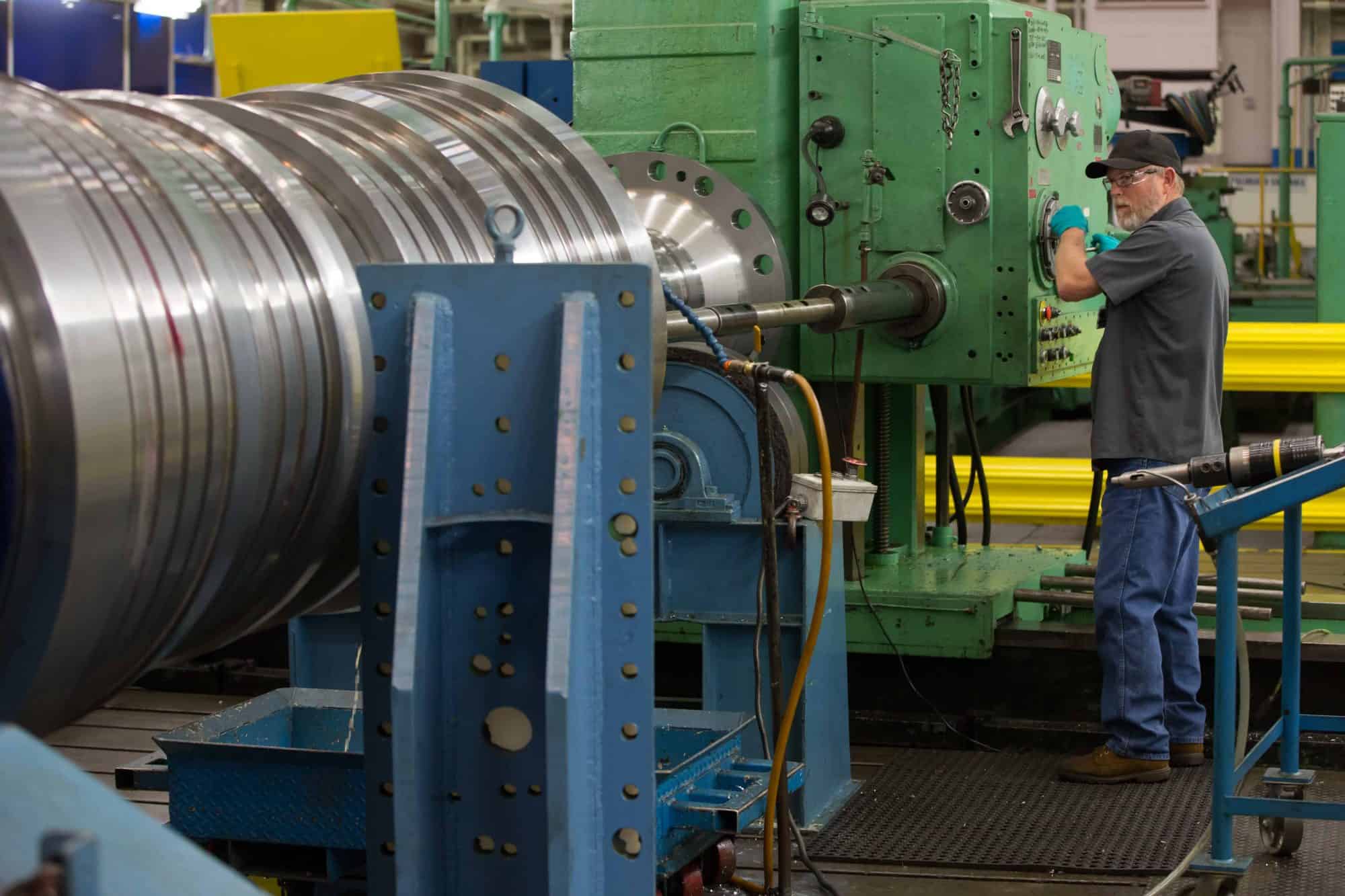
Right now, one-quarter of the manufacturing workforce is over 55 years old. Meanwhile, the manufacturing industry is struggling to attract enough younger workers with the right skills and qualifications. Facing a workforce crisis—with open jobs in manufacturing recently reaching an all-time high—manufacturers are finding that retaining older workers is not only a necessity but an asset.
The Manufacturing Institute’s Center for Manufacturing Research, in partnership with the Alfred P. Sloan Foundation, recently conducted a survey to discover how companies are addressing this shifting demographic challenges.
This workforce issue affects nearly all manufacturers, the study found. Ninety-seven percent of respondents reported that they fear losing institutional knowledge when these workers depart.
“Manufacturing is facing a demographic sea change—leaders in the industry know it, and many are proactively adapting to it,” said Chad Moutray, the Manufacturing Institute’s Center for Manufacturing Research director and the National Association of Manufacturers’ chief economist. “Given the current workforce crisis, other manufacturers should look to the successful initiatives being implemented in the industry and collectively expand on them to develop the workforce of tomorrow. The simple fact is that companies are very concerned about losing their top talent to retirement and are finding creative ways to keep them longer and to train younger workers.”
The study also examined the innovative approaches manufacturers can use to extend older workers’ productivity and help transfer institutional knowledge to the next generation. For example, manufacturers are implementing upskilling and training programs to address the challenges this demographic may experience. Sixty-nine percent of companies said they had on-the-job training programs, and 54 percent said they have internal technical training programs.
“Manufacturers are utilizing the expertise of their older workers, implementing policies and procedures to keep them longer and creating opportunities to pass on their knowledge and talents to the next generation,” said Carolyn Lee, the Manufacturing Institute’s executive director. “The reason for this is clear: unlocking the knowledge of today’s older manufacturing workers is critical to shaping tomorrow’s industry leaders.”
Manufacturing Output Hits All-Time High, Signaling Industry’s Strength
For the past two years, manufacturers have been setting new records when it comes to manufacturing output, and through the first quarter of 2019, the industry has continued to reach new heights.
Four out of five manufacturers remain positive about their company’s outlook, according the National Association of Manufacturers’ latest Outlook Survey, and new Bureau of Economic Analysis (BEA) data find that manufacturers’ level of output hit an all-time high once again. As noted in the recent BEA report, manufacturers produced a total of $2.3852 trillion worth of goods for the economy in the first quarter of 2019, up from $2.3845 trillion in the fourth quarter of 2018.
“Manufacturing output has consistently set new records since the beginning of 2017, and while we have seen softer data so far in 2019 than we might prefer, I would continue to expect the sector to hit new all-time highs throughout the rest of this year,” the NAM’s Chief Economist Chad Moutray said.
In fact, manufacturing accounted for 11.3 percent of real GDP in the first quarter of 2019—and the industry continues to have the largest economic multiplier of any major sector.
“At a time when conventional wisdom holds that the sector is less important than it once was, all of these data show manufacturing in the United States is alive and kicking, producing more goods than ever and continuing to be a bright spot in the economy,” Moutray said.
The industry’s continued success has created many new jobs as well. Manufacturing job openings were also at an all-time high in May with 509,000 open jobs, according to the Bureau of Labor Statistics’ Job Openings and Labor Turnover Survey. This solid job creation is actually exacerbating an existing challenge in the industry: a lack of enough skilled workers.
Manufacturers could have 2.4 million unfilled jobs by 2028 unless the right steps are taken today to build the workforce of tomorrow. The NAM and The Manufacturing Institute are leading the way toward solving this workforce crisis, and they have launched a $10 million Creators Wanted campaign, which plans to fill 600,000 manufacturing jobs by 2025.
Heroes MAKE America Graduate’s Manufacturing Career Takes Flight
"Once I got to the description of Heroes MAKE America, I knew that was what I wanted to do."
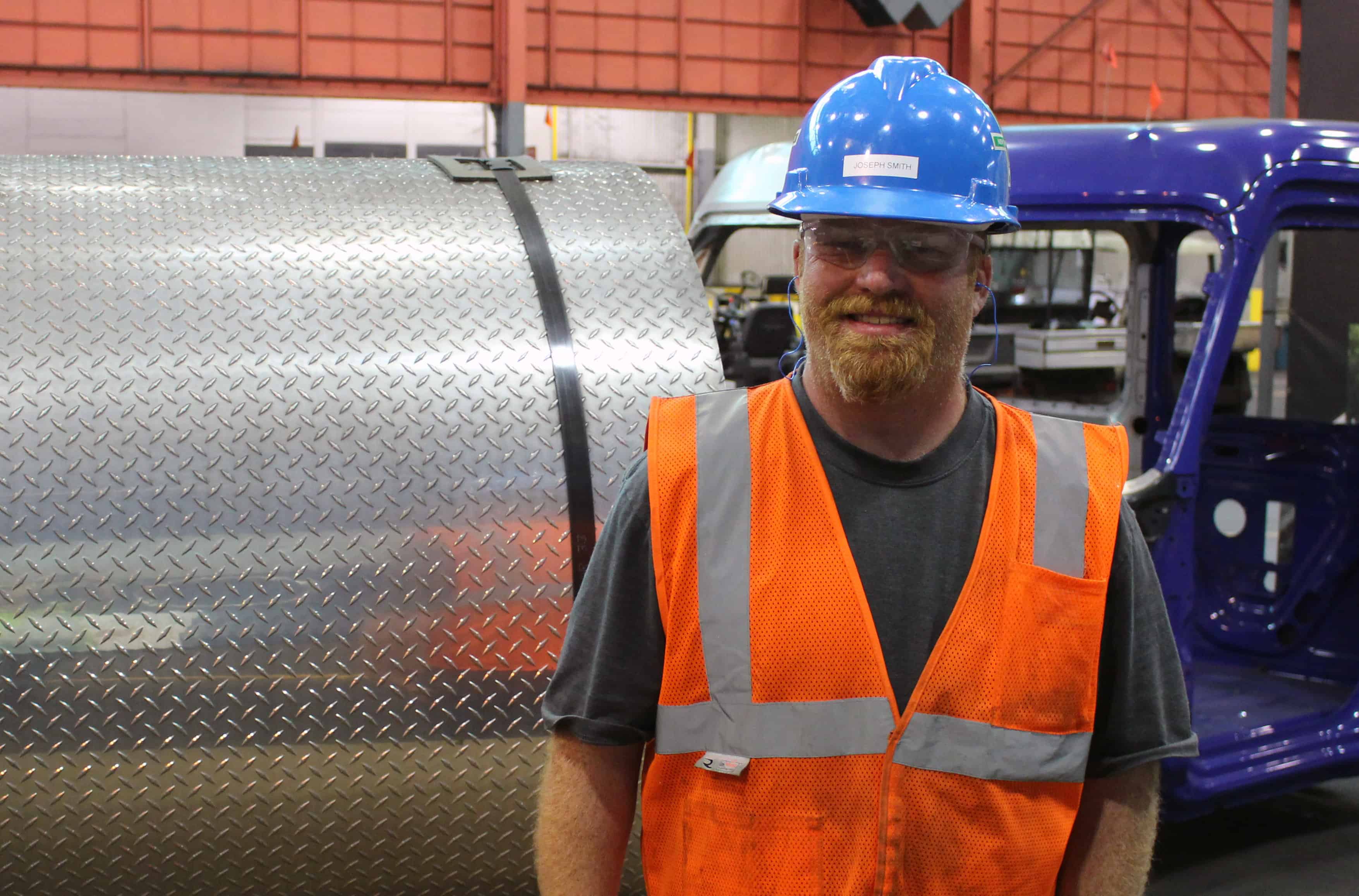
Joseph Smith spent 20 years in the military, beginning as a mechanic working on Apache helicopters and serving for most of his career as a maintenance supervisor in the U.S. Army. Today, he’s a maintenance unit supervisor based in Davenport, Iowa, at Arconic—a worldwide light metals manufacturer creating products for sectors from aerospace to consumer electronics.
Initially, Smith didn’t know how he’d adapt to civilian life after two decades in the military, but he was immediately impressed with The Manufacturing Institute’s Heroes MAKE America program, which aims to connect manufacturers with highly qualified candidates and offer transitioning service members manufacturing-related training and support, creating a pipeline between the military and manufacturing.
“I was trying to decide what I wanted to do after the military,” said Smith. “I was looking into the different programs and apprenticeships the army offered, and once I got to the description of Heroes MAKE America, I knew that was what I wanted to do.”
Smith grew up interested in how things are made. “I used to watch that How It’s Made series on TV,” he said. For him, his new job makes sense. He still enjoys watching how aluminum is made from raw material and seeing it become a finished product like the wing of an airplane.
“There’s so much that goes into the products that we use and the things we see on a daily basis,” he said.
Smith has been impressed by the similarities between his role in the military and his current position. While the transition to civilian life could have been challenging after two decades in the military, he immediately found manufacturing was uniquely suited to his skills.
“I could almost instantly tell,” Smith said. “The way that the maintenance portion of Arconic runs was very similar to, day-to-day, how working in the military was.”
Smith encourages other veterans to consider making the same move he did and emphasizes the number of jobs available to skilled workers.
“There are a lot of people who don’t realize how valuable a career in manufacturing can be,” says Smith. “Especially for a veteran coming out of the military, they don’t realize how in-demand their skills can be. Everything you do can be translated into a manufacturing career. And manufacturing employers are hiring like crazy.”
Learn more about the Manufacturing Institute’s Heroes MAKE America program.
Heroes MAKE America Student Makes Tracks at Goodyear
“As manufacturing goes more autonomous, there are more skilled positions available.”
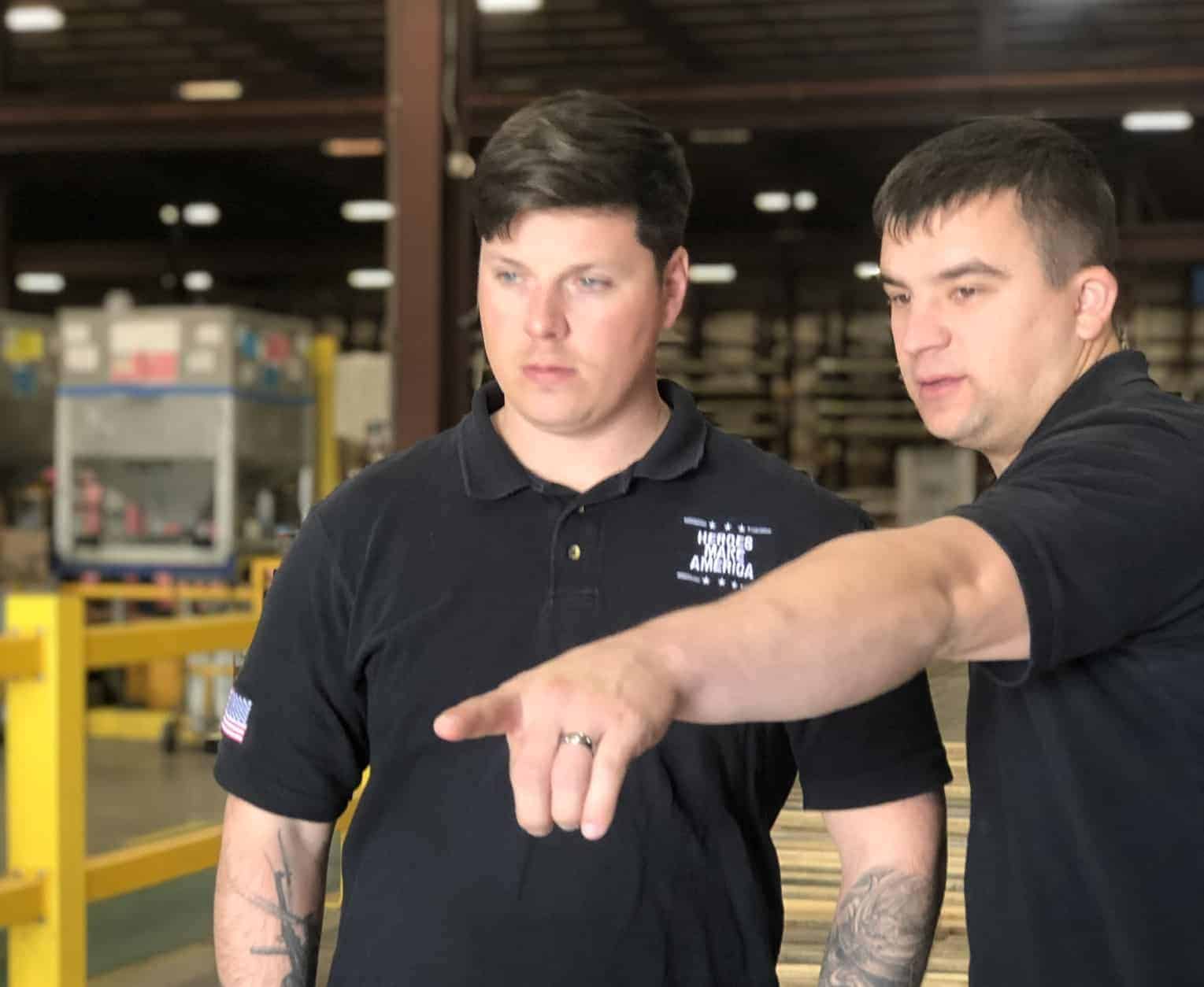
Jason Gustine has always enjoyed learning how things are made. As an area manager at the Goodyear Tire & Rubber Company in Topeka, Kansas, he taps into his lifelong interest while making use of the people skills and the processes he learned in the military.
“I was worried it would be a culture shock, and I wasn’t going to fit in,” said Gustine. “But going into a manufacturing facility, it fits exactly with the military mindset. That was the biggest surprise—how easy that transition was.”
Military service runs in Gustine’s family. His father is a former helicopter pilot who served in Vietnam, and Gustine was determined to follow in his father’s footsteps. He joined the U.S. Army in January 2008 and served 11 years in the military—as a mechanic, a Blackhawk crew chief, a standardization instructor and eventually a leader in quality control, making sure helicopters were safe to fly.
When he was beginning the transition out of military service, Gustine joined up with the Manufacturing Institute’s Heroes MAKE America program, which aims to connect manufacturers with highly qualified candidates and offer transitioning service members manufacturing-related training and support, creating a pipeline between the military and manufacturing. Through the program in Fort Riley, Kansas, he realized that manufacturing was a perfect next step for him.
“It fit into my wheelhouse,” he said. “A lot of it was maintenance and mechanics, which I’d been doing my whole life. Making sure that the product they’re sending out is the right quality. And every Friday, we would go tour a different facility. That’s what opened my eyes to what manufacturing had to offer.”
He credits the Heroes MAKE America program with helping to smooth the transition out of the military.
“Getting out of the military is a very stressful time,” he said. “I had all these skills—I had worked on helicopters for 10 years—but I didn’t really know how that was going to transition to the civilian world.”
Gustine has been impressed with the way manufacturing has integrated high-tech processes into daily operations without lessening the need for skilled employees, and the industry continues to emphasize the need for new workers.
“People have this idea that it’s all automated now, which is not true at all,” he said. “As manufacturing goes more autonomous, there are more skilled positions available.”
Gustine is enthusiastic about what manufacturing has to offer and encourages other service members to consider the wide range of available roles.
“The manufacturing field is so big—you can do everything from making tires in Topeka to building cars in Ohio,” Gustine said. “Whatever you want to do, you can find your niche or find your spot. It opened my eyes to how much manufacturing there is in the United States. Find out where you want to go, and the sky is the limit in manufacturing.”
Learn more about the Manufacturing Institute’s Heroes MAKE America program.
Heroes MAKE America Student Goes from the Army to Mars
An Army veteran's skills translate seamlessly in the manufacturing industry.
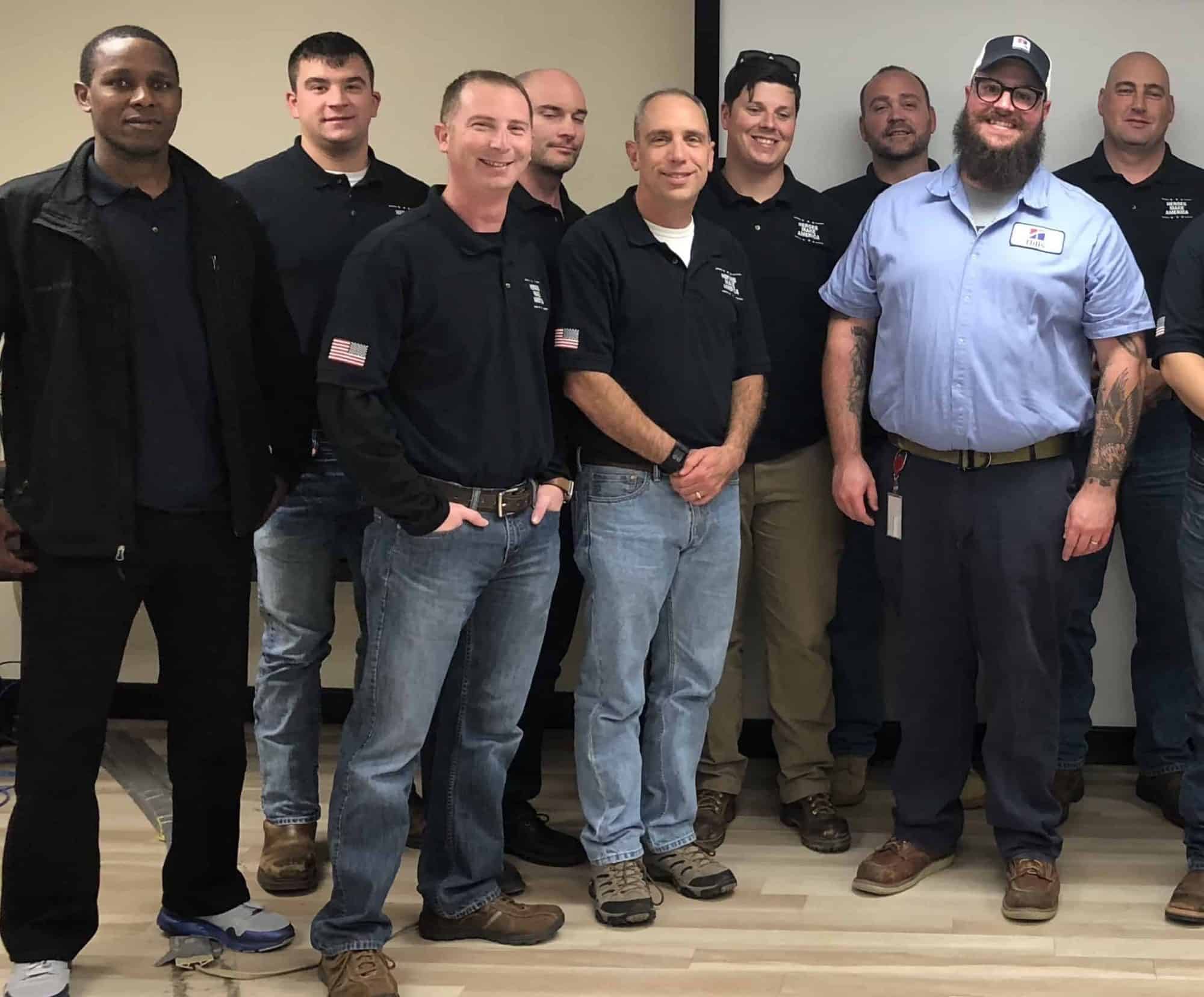
As a production scheduler for Mars, Incorporated, Thomas Schlieper has a hand in sending sweet treats all over the world.
In some ways, it’s very different from his former career. As a teenager, Schlieper joined the Army National Guard because it offered benefits like tuition assistance and scholarships that would help him go to college. When he finished school, he worked in his hometown and eventually decided to go into active service in the U.S. Army. That career spanned two decades and helped lead him to the manufacturing job he enjoys today.
While Schlieper served as an Army senior supply specialist, he enrolled in the Manufacturing Institute’s Heroes MAKE America program, which aims to connect manufacturers with highly qualified candidates and offer transitioning service members manufacturing-related training and support, thus creating a pipeline between the military and manufacturing. Through this U.S. Department of Defense-approved program, he toured the Mars production facility in Topeka, Kansas. Mars recognized his logistics experience and offered him a production scheduler position, which he accepted in February 2019.
“I served 20 years as a logistics guy,” he said. “Ordering supplies, making sure soldiers in the Army had what they needed. The leadership skills I learned in the Army helped me adapt to this new role.”
Schlieper recalls the stress he felt during his first day on the job at Mars, when he wondered whether he was up to the challenges of his new role—and the moment when it all clicked.
“My first couple days there, after I did the orientation, I was overwhelmed,” he said. “I thought, am I getting over my head? I was just a soldier, and now I’m something different.”
He was shadowing another employee when he suddenly realized that the system he would be using as a production scheduler at Mars was exactly the same system he used every day when ordering supplies and managing logistics in the Army.
“I looked at the system, and I was totally relieved,” said Schlieper. “All that stress went away, and I was like, I know this. I can do this.”
Today, Schlieper is deeply immersed in his new industry. He feels it’s a good fit for former members of the military, who will have an easier learning curve as a result of their training.
“Before I retired, some people I knew thought manufacturing jobs were jobs nobody wanted,” he says. “But that’s really not the case. It’s completely different. It’s a whole new world.”
Learn more about the Manufacturing Institute’s Heroes MAKE America program.
Future of Manufacturing Depends on Building Workforce
Get the Latest News
Sign Up Here
In many ways, manufacturing has never been doing better. Record numbers of manufacturers are optimistic about the future. Many are growing, investing, and hiring. Yet, this success is also fueling a growing crisis: too many manufacturing jobs and not enough workers to fill them.
Carolyn Lee, executive director of The Manufacturing Institute (MI)—the education and workforce partner of the National Association of Manufacturers—helps explain manufacturing’s “skills gap” workforce crisis and what the MI is doing to help solve it.
Carolyn, just how bad is the problem currently?
There are more than half a million open jobs in manufacturing right now, and based on a study by The Manufacturing Institute and Deloitte, 2.4 million jobs could go unfilled and about $2.5 trillion worth of GDP could be at risk over the next decade if we don’t get this under control soon. So this is a problem for manufacturing, yes, but it’s also a problem for the economy overall.
What’s driving it?
There are three main drivers. Some don’t know these jobs exist, some don’t have the right skills to land them, and some just don’t see the point. That last challenge—the perception challenge—is particularly tricky. Many envision manufacturing jobs the way their grandparents remember them. But that really isn’t how modern manufacturing careers look today.
Well, how do they look?
Modern manufacturing careers are increasingly high-tech, high-skill, and high-pay. The possibilities in manufacturing will become even more exciting as Manufacturing 4.0 technology continues to revolutionize the industry. Tomorrow’s manufacturing jobs will increasingly rely upon irreplaceable human skills—things like creativity, critical thinking, design, innovation, engineering and finance—and, by the way, many of these careers don’t require a four-year degree or the debt that can come with it.
What is the Institute doing to address this challenge?
We have a variety of programs designed to excite, educate and empower the manufacturing workforce of today and tomorrow, with a particular focus in four key areas: women, veterans, youth and lifelong learning. We are empowering women already in the industry and giving them tools to inspire and mentor others (STEP Women’s Initiative), we are connecting transitioning service members and veterans to great careers in manufacturing plus arming them with the exact skills and qualifications needed to excel (Heroes MAKE America), we are helping excite the next generation by encouraging companies and educational institutions across the country to open their doors to the reality of modern manufacturing careers (MFG Day), and we are engaged in a variety of initiatives to help current manufacturing workers access training for newer technology-intensive jobs—among many other programs and initiatives.
What can others do to help be a part of the change the MI is trying to enact?
One thing I’d recommend, and something the Institute is working to facilitate, is for people to educate themselves, their families, and their friends on what jobs in manufacturing truly look like. It’s an exciting time to be a manufacturer and there are lots of great opportunities in the industry, so come join us.
STEP Award Winner Leads Teams, Saves Lives
Get the Latest News
Sign Up Here
As the North America Deliver Operations Lead at Johnson & Johnson, Elaine Thibodeau’s work helps ensure quality, continuity, preparedness and resiliency across the supply chain. She also serves as an advocate for women in the manufacturing industry and a voice of encouragement for millions of young women and girls who might enter the industry one day.
“I think we need to keep fighting the myth that a manufacturing career doesn’t marry well with having a family,” Thibodeau said. “We need to find opportunities to bring young women into our factories and give them early, positive experiences with the industry.”
Her 30 years of experience at Johnson & Johnson includes time in orthopedics, diagnostics, pharmaceutical manufacturing and consumer medical devices – roles that have come with all sorts of challenges. Earlier in her career, Thibodeau led a team that was tasked with taking over a third-party plant to continue producing an oncology medication that was on the FDAs drug shortage list. By making a deal with a supplier to take over a section of their plant, she kept production running.
Doctors in an advocacy group told Thibodeau how essential the medication was for their patients and how shortages caused them to make difficult decisions. “That always stuck with me – it motivated me every day to do my job well,” she said.
At times, Thibodeau faced immense challenges. After Hurricane Maria devastated Puerto Rico, she worked to get manufacturing up and running, bringing jobs back to the community that was deeply affected and providing vital products to enable employees to take care of themselves.
“Day-to-day life was just physically difficult,” she said. “We had to take care of the people first, making sure they had what they needed to be safe, whether that was a generator or medicines or water or diapers.” In collaboration with site leaders and other businesses in the area, she helped to rebuild the industry and begin the process of renewal.
Thibodeau’s interest in manufacturing began at a young age. As a young girl, she built furniture for her dolls with raisin boxes and pieces of wood she found in her family’s garage. When her father, an electrician, went to work, she would tag along, learning how to trouble shoot, which is a skill that has proven valuable.
“I had building blocks and I liked to sew,” Elaine remembered. “I was always interested in putting things together.” An enthusiasm for math and some encouraging teachers led her to an engineering degree, and after a few years, she was offered her first role at Johnson & Johnson – beginning an exciting career that continues to draw her out of her comfort zone.
“If the new job or the new project doesn’t scare you a little bit,” she said, “you’re probably going to be bored in six months.”
Elaine Thibodeau won a 2019 Manufacturing Institute STEP Ahead Award. This profile was adapted from an original interview for the Input, the NAM’s members-only e-newsletter.
Report: Automation Offers Manufacturing Opportunities
New report suggests automation may have a significant positive impact for people interested in the manufacturing industry.
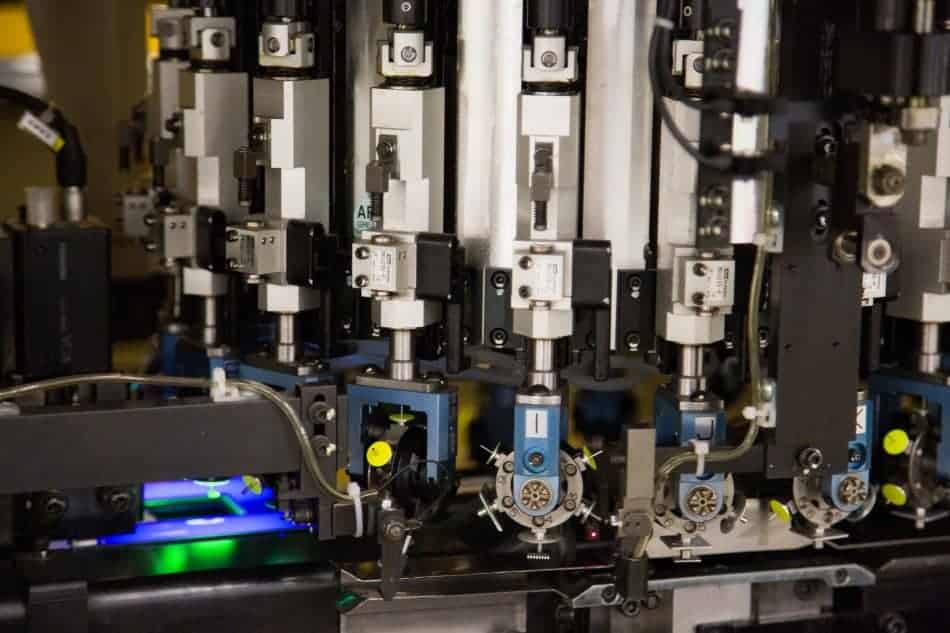
A new report from The Manufacturing Institute – the workforce and education partner of the National Association of Manufacturers – and PricewaterhouseCoopers suggests that increased automation in manufacturing may come with significant opportunities for workers in the industry.
The report – “Navigating the Fourth Industrial Revolution to the Bottom Line” – examines the ways that systemic changes are impacting the manufacturing industry, from the expansion of robotics to an increased interest in developing connected products. While manufacturers recognize the potential value of advanced technologies – including robotics, the Industrial Internet of Things, cloud computing, advanced analytics, 3D printing, and virtual and augmented reality – the prospect of integrating these new innovations with existing processes has raised questions.
The new report suggests automation may have a significant positive impact for people interested in the manufacturing industry – an increased need for talent to manage in a more automated, flexible production environment and new jobs for workers who can engineer robotics and their operating systems, to name a few opportunities. Rather than taking jobs away from workers, the report’s survey finds that most manufacturers see automation as reinforcing the need for distinctly human abilities.
“This technological shift is moving manufacturers rapidly toward jobs that require irreplaceable human skills, such as creativity, critical thinking, design, innovation, engineering and finance,” said Chad Moutray, Director of The Manufacturing Institute’s Center for Manufacturing Research. “Machines need workers to program, operate and maintain them, and today automation often works alongside workers, especially in the performance of monotonous tasks, which helps free workers to shift their focus to more interesting ones.”
Some of that work will come from existing employees. In fact, the report suggests that most manufacturers are planning to upskill and reskill their current employees on using and managing new technologies. In addition, manufacturers see a need to expand their workforce to include new employees – in part, by identifying and recruiting talented science, technology, engineering, and mathematics students, and by providing outside training at community colleges and through technology vendors in order to prepare potential new workers for roles in modern manufacturing.
“According to the World Economic Forum, we could create 133 million jobs by 2022 if workers are given significant reskilling and the next generation of workers is trained properly,” said Moutray. “Technological change can be a plus for manufacturing workers if we undertake the right approach now.”
All told, about 70 percent of manufacturers say the biggest impact of robotics on the workforce over the next five years will be the increased need for talent to manage in a more automated environment, and for new workers fill important jobs. The Manufacturing Institute has become the leading industry voice in Washington calling for workforce and education policies that bridge the skills gap, and it has a number of programs aimed toward supporting the manufacturing workforce of today and growing the manufacturing workforce of tomorrow.
“Technology isn’t a threat – technology is an enabler,” said Moutray. “It’s actually helping us do our jobs, helping us get to where we need to go, and then enabling that next generation.”
